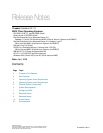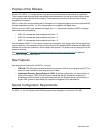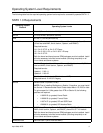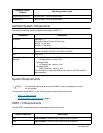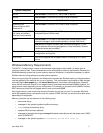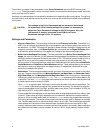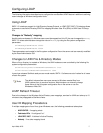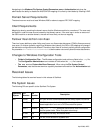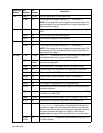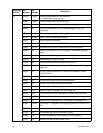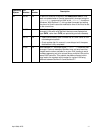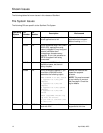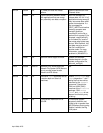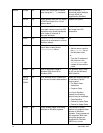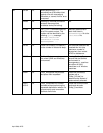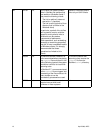
6 April 2006, ADIC
The solution is to adjust a few parameters on the Cache Parameters tab in the SNFX control panel
(cvntclnt). These parameters control how much memory is consumed by the directory cache, the buffer
cache, and the local file cache.
As always, an understanding of the customer's workload aid in determining the correct values. Tuning is not
an exact science, and requires some trial-and-error to come up with values that work best in the customer's
environment.
Settings and Parameters
• Directory Cache Size - The first setting to consider is the Directory Cache Size. The default is 10
(MB). If you do not have large directories, or do not perform lots of directory scans, this number can
be reduced to 1 or 2MB. The impact will be slightly slower directory lookups in directories that are
frequently accessed. Also, in the Mount Options tab, you should set the Paged DirCache option
to allocate the specified memory from paged pool instead of the default non-paged pool.
• Buffer Cache NonPaged Pool Usage - The next parameter is the Buffer Cache NonPaged Pool
Usage; the value is in percent (%) and represents the percentage of available non-paged pool that
the buffer cache will consume. By default, this value is 75%. This should typically be set to 25 or at
most 50 for two or more file systems to avoid over-consumption of the non-paged pool. The
minimum value is 10 and the maximum value is 90. Associated with this setting are the Data Buffer
Cache Minimum and Data Buffer Cache Maximum settings. These settings specify the minimum
and maximum amount of paged plus non-paged memory (in megabytes) consumed for buffer
cache for the selected file system.
• Watermarks - The following parameters control how many file structures are cached on the client;
they are. These are controlled by the Meta-data Cache Low Water Mark, the Meta-data Cache
High Water Mark and the Meta-data Cache Max Water Mark. Each file structure is represented
internally by a data structure called the cvnode. The cvnode represents all the states about a file
or directory. The more cvnodes that there are encached on the client, the fewer trips the client has
to make over the wire to contact the FSM.
Each cvnode is approximately 1462 bytes in size and is allocated from the non-paged pool. The
cvnode cache is periodically purged so that unused entries are freed. The decision to purge the
cache is made based on the Low, High, and Max water mark values. The Low default is 1024, the
High default is 3072, and the Max default is 4096.
These values should be adjusted so that the cache does not bloat and consume more memory than
it should. These values are highly dependent on the customer's workload and access patterns.
Values of 512 for the High water mark will cause the cvnode cache to be purged when more than
512 entries are present. The cache will be purged until the low water mark is reached, for example
128. The Max water mark is for situations where memory is very tight. The normal purge algorithms
takes access time into account when determining a candidate to evict from the cache; in tight
memory situations (when there are more than the maximum entries in the cache), these constraints
are relaxed so that memory can be released. A value of 1024 in a tight memory situation should
work.
CAUTION
The settings in the Cache Parameters tab are relevant to the selected
file system only. When running multiple file systems it is necessary to
adjust the Cache Parameters settings for EACH file system. Also, the
total amount of memory consumed is the SUM of the Cache
Parameters settings for ALL file systems.



